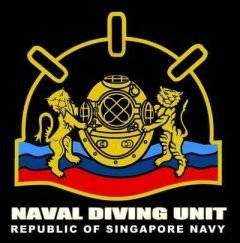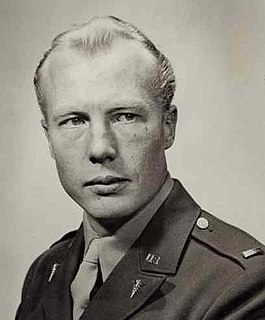
The US employs divers in several branches of the armed forces, including the navy, army, marines, air force and coast guard.

The US employs divers in several branches of the armed forces, including the navy, army, marines, air force and coast guard.
The USMC Combatant Diver Course is located at the Navy Diving and Salvage Training Center, Naval Support Activity Panama City, Panama City, Florida.
Currently, United States Coast Guard Regional Dive Locker Teams are assigned to Deployable Specialized Forces, full-time diving capability for three primary missions: Ports and Waterways Coastal Security (PWCS); Aids to Navigation (ATON); and ship husbandry and repair in remote polar regions. At these units, divers perform a variety of missions, from buoy tending to science support in the polar regions and security diving operations in ports around the country. The Units are located at the following: Portsmouth, Virginia Regional Dive Locker East (RDLE), Regional Dive Locker West (RDLW) is located in San Diego, California and Regional Dive locker Pacific (RDLP) which is located in Honolulu, Hawaii. Divers attached to Maritime Safety and Security Teams, have the unique capability of using detecting and, if necessary, stopping or arresting submerged divers, using the Underwater Port Security System. It is the only special operations group that can arrest submerged divers.
According to Record Group 226 at the National Archive over 45 United States Coast Guard men were attached to the Office of Strategic Services Maritime Unit Operational Swimmer Groups (OSG). All OSGs had Coast Guard men, and several CG men were attached to UDT 10 in the Pacific after training with the OSS MU. LT John P. Booth (USCG) was Commanding Officer in the field of OSG 1. He was attached to OSS Detachment 101 and OSS Detachment 404 in the China and Burma and India war area where he and his team conducted reconnaissance and infiltration by sea, scouted enemy shoreline, and participated in combat swimmer and covert operations. These OSS Frogmen pioneered the use of unassisted diving techniques to include the Lambertsen Unit (allowing men to swim underwater for up to 3 hours), swimfins and the underwater compass. These men also experimented with underwater delivery systems referred to as the "Sleeping Beauty". Several of these Coast Guard/OSS Frogmen, including LT Booth, were awarded the Bronze Star for their "service with the Office of Strategic Services" by the Commanding General CBI. Although it is widely thought[ by whom? ] that the Navy UDT's were the first Frogmen, in fact it was the combined efforts of the OSS Frogmen (Operational/Combat Swimmers), USN Scouts & Raiders, and NCDUs/UDTs, that laid the foundation for what would later become the U.S. Navy SEALS. The first OSS Frogman, according to the Naval Special Warfare Foundation was USN Petty Officer John Spence who trained at OSS Maritime Unit AREA D on the Potomac River with USN LT Jack Taylor, who is widely considered the first SEAL. Over half of the OSS Frogmen / Combat swimmers were in fact Coast Guard men sought out for their advanced swimming, diving, and boat handing skills. [7]
As of July 2008 Qualified Coast Guard Officers and enlisted Petty Officers are permitted to volunteer for Navy SEAL training. 21 May 2010 two Coast Guard officers graduated BUD/S class 277 and moved on to further Naval Special Warfare Training; ultimately to join active Navy SEAL teams. RADM Gary Bonelli, Deputy Commander of the Naval Special Warfare Command stated to the USCG Web journal the following:
"Naval Special Warfare is proud to team with the nation's first U.S. Coast Guard officers qualified as U.S. Navy SEALs...During the past fourteen months, they have proven their mettle and have truly earned the right to be called our teammates. Cooperation among all services is a critical component of the National Maritime Strategy. Today's graduation is just one more example of the many integral ties that bind our maritime services. Congratulations to SQT Class 277!" [8]

The United States Navy Sea, Air, and Land (SEAL) Teams, commonly known as Navy SEALs, are the U.S. Navy's primary special operations force and a component of the Naval Special Warfare Command. Among the SEALs' main functions are conducting small-unit special operation missions in maritime, jungle, urban, arctic, mountainous, and desert environments. SEALs are typically ordered to capture or to eliminate high level targets, or to gather intelligence behind enemy lines.

A frogman is someone who is trained in scuba diving or swimming underwater in a tactical capacity that includes military, and in some European countries, police work. Such personnel are also known by the more formal names of combat diver, combatant diver, or combat swimmer. The word frogman first arose in the stage name The Fearless Frogman of Paul Boyton in the 1870s and later was claimed by John Spence, an enlisted member of the U.S. Navy and member of the OSS Maritime Unit, to have been applied to him while he was training in a green waterproof suit.
Underwater divers may be employed in any branch of an armed force, including the navy, army, marines, air force and coast guard. Scope of operations includes: search and recovery, search and rescue, hydrographic survey, explosive ordnance disposal, demolition, underwater engineering, salvage, ships husbandry, reconnaissance, infiltration, sabotage, counterifiltration, underwater combat and security.

Underwater Demolition Teams (UDT), or frogmen, were amphibious units created by the United States Navy during World War II with specialized non-tactical missions. They were predecessors of the navy's current SEAL teams.

The SEAL Delivery Vehicle (SDV) is a manned submersible and a type of swimmer delivery vehicle used to deliver United States Navy SEALs and their equipment for special operations missions. It is also operated by the Royal Navy's Special Boat Service, which operates three SDVs.

The United States Naval Special Warfare Command (USNSWC), also known as, is the naval component of United States Special Operations Command, the unified command responsible for overseeing and conducting the nation's special operations and missions.

The diver insignia are qualification badges of the uniformed services of the United States which are awarded to servicemen qualified as divers. Originally, the diver insignia was a cloth patch decoration worn by United States Navy divers in the upper-portion of the enlisted service uniform's left sleeve during the first part of World War II, when the rating insignia was worn on the right sleeve. When enlisted rating insignia were shifted to the left sleeve in late World War II, the patch shifted to the upper right sleeve. The diving patch was created during World War II, and became a breast insignia in the late 1960s.

The Naval Special Warfare Command, commonly known as the Royal Thai Navy SEALs, is the special operations force of the Royal Thai Navy.

Naval Diving Unit (NDU) is the special forces formation of the Republic of Singapore Navy.

A clearance diver was originally a specialist naval diver who used explosives underwater to remove obstructions to make harbours and shipping channels safe to navigate, but later the term "clearance diver" was used to include other naval underwater work. Units of clearance divers were first formed during and after the Second World War to clear ports and harbours in the Mediterranean and Northern Europe of unexploded ordnance and shipwrecks and booby traps laid by the Germans.
Underwater demolition refers to the deliberate destruction or neutralization of man-made or natural underwater obstacles, both for military and civilian purposes.

The Russian commando frogmen, informally called "frogmen" in civilian media, are a Russian Naval Spetsnaz unit under operational subordination to the Main Intelligence Directorate (GRU). It is the special forces unit of the Russian Naval Infantry and is composed of highly trained and elite marines within the Naval Infantry. By virtue of belonging to the Russian Naval Infantry, frogmen fall under the Coastal Troops of the Russian Navy service arm. The Russian Navy proper does not field any special forces or special operations units. Russian FSB special forces Alpha Group and Vympel also have frogman units in their respective naval components.
Defenses against swimmer incursions are security methods developed to protect watercraft, ports and installations, and other sensitive resources in or near vulnerable waterways from potential threats or intrusions by swimmers or scuba divers.

The Kopaska is the premier frogman and underwater demolition unit of the Indonesian Navy. The unit's motto is in Sanskrit: Tan Hana Wighna Tan Sirna. The unit's main duties are underwater demolition, destroying main underwater installations, reconnaissance, prisoner snatches, preparing beaches for larger naval amphibious operations, and counter-terrorism. During peacetime, the unit also deploys a team to serve as security personnel for VIPs and VVIPs. The personnel of Kopaska are recruited from Indonesian Navy seamen. Like other Indonesian special forces, Kopaska is trained to be able to conduct operations in the sea, including underwater, on land and airborne.

Minedykkerkommandoen (MDK) or Norwegian Naval EOD Command is a clearance diver group. MDK is subordinate to the Royal Norwegian Navy. MDK is located at Haakonsvern Naval Base in Bergen and Ramsund Naval Base, in vicinity of Harstad.
Canadian Armed Forces (CAF) divers are specialists trained to conduct underwater operations within their respective environmental commands. Divers within the CAF are qualified in any sub-category of diving, whether a member of a diving team or a CAF member who is maintaining currency and qualification through casual diving with a CAF diving team. Divers within the CAF be trained as Clearance Divers, Search and Rescue Technicians (SAR), Port Inspection Divers (PID), Ship's Team Divers, and Combat Divers.

The following outline is provided as an overview of and topical guide to underwater diving:

The following index is provided as an overview of and topical guide to underwater diving:

Special Forces Underwater Operations (SFUWO) is the term for United States Army Special Forces combat operations involving the use of underwater infiltration methods. These typically involve the use of closed circuit dive equipment to infiltrate a beach landing site (BLS) undetected. The US Army Special Forces, also known as Green Berets have been conducting maritime operations and underwater operations since their founding in 1952. Currently, each company within the 7th Special Forces Group mans, trains, equips and deploys a SFUWO Operation Detachment Alpha (SFOD-A). These twelve-man teams train for SFUWO as their primary infiltration method when conducting one of their missions of Unconventional Warfare, Direct Action, Counter-terrorism or Foreign Internal Defense, among others.
{{cite web}}: CS1 maint: archived copy as title (link)